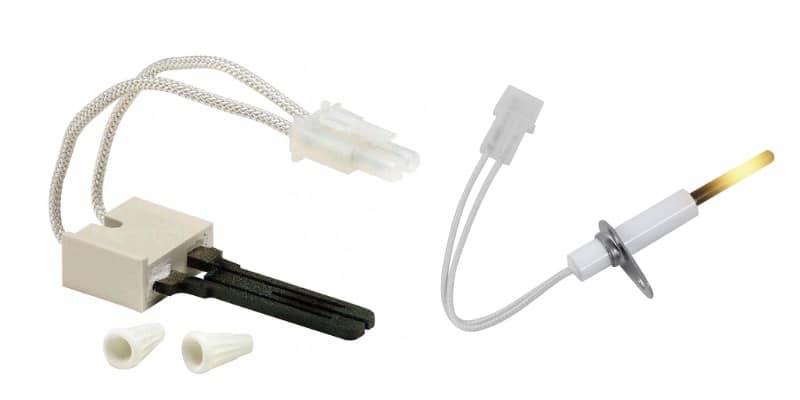You’ve likely heard about pilot lights in gas furnaces, an age-old method of initiating the ignition. However, modern advancements have introduced a more efficient and safer alternative, the hot surface igniter (HSI). Dive into this technical exploration of hot surface igniter systems, their workings, and their significance in today’s heating systems.
Hot Surface Ignition: A Revolution in Gas Furnaces

Hot surface ignition systems have transformed the way gas furnaces ignite. Ditching the traditional spark igniter, these systems utilize a unique ‘M’ or fork-shaped component of either silicon carbide or silicon nitride. The magic begins when a high-current, low-voltage electricity surges through this igniter, raising its temperature to a sizzling 2500 degrees Fahrenheit.
Considering that natural gas can be ignited around 1163 degrees Fahrenheit and propane between 920 and 1020 degrees Fahrenheit, the electrical heat will effortlessly incite combustion in these gases. The pilot system is then ignited.
Safety is paramount. After the igniter heats up, a brief delay ensures the gas valve opens, enabling gas flow. But before the gas reaches the burner, the flame-sensing tech verifies the pilot’s lighting. Suppose any anomaly arises or the pilot fails to light. In that case, an immediate shutdown of the gas valve is initiated, preventing potential hazards.
How Does the Hot Surface Igniter Work?
Upon a heat request from your furnace:
- The induced draft motor kicks in, ensuring the safe venting of exhaust by-products.
- A sensor confirms the motor’s operational status.
- The hot surface igniter becomes the star, glowing intensely as electrical energy floods it.
- After achieving the right temperature, the gas valve opens. Rapid ignition by the hot igniter ensures efficient combustion.
- Once ignited, power to the HSI stops, conserving energy.
HSI Sequence Operations: Simplified
- Startup: A simple flick on your ignition system initiates the safety checks. Once verified, the main burner lights up, setting your fire ablaze.
- Ongoing Operation: Reliability and safety are consistent themes. Even as you enjoy the warmth, the system continuously monitors the flame status and other safety parameters. A swift response mechanism turns off the gas flow if anomalies are detected and retried thrice before a total shutdown.
- Shutdown: As effortless as the startup, a switch flip will snuff out the flame, ensuring your safety.
Safety First with Hot Surface Ignition Systems
A frunace flame sensor is the backbone of safety in HSIs. Detecting the heat from combustion, this sensor ensures power to the HSI stops post-ignition. If no flame is detected within a set timeframe, the gas valve is immediately shut off, preventing raw gas leaks.
Is Your Furnace Ignitor Malfunctioning?
A furnace ignitor is a quintessential component in the smooth operation of modern heating systems. When it malfunctions, not only does the warmth in your home disappear, but it can also raise concerns about safety.
HSIs usually operate at 120 volts, though exceptions exist. Knowing the correct voltage from your control board is crucial when replacing an HSI. Improper voltage can lead to malfunctions or even damage the new igniter.
How to Test Your HSI
Testing the HSI for continuity and resistance becomes essential if furnace ignition issues arise.
- Voltage Test: Ensure the gas supply is off. Disconnect the old HSI and connect a meter to the wires from the board. Start a call for heat and verify the voltage. Remember, this is a live voltage test, so caution is advised.
- Resistance Test: With an ohmmeter, disconnect the HSI and check for continuity. Different HSIs have unique resistance benchmarks. Ensure you’re within the correct range for optimal functionality.
Replacing the Ignitor
If the hot surface ignitor appears damaged or doesn’t pass the tests:
- Note the make and model of your furnace to get the correct replacement ignitor.
- Unfasten the ignitor from its bracket, usually secured by screws.
- Carefully remove the connectors linking the ignitor to the furnace.
- Attach the new hot surface ignitor, secure it, and reconnect the wires.
- Ensure the ignitor’s position aligns correctly with the gas flow for effective ignition.
In conclusion, Hot Surface Ignition systems epitomize the fusion of safety and efficiency in modern-day gas furnaces. By understanding their operations and maintenance, you’re ensuring warmth and your home’s well-being.






